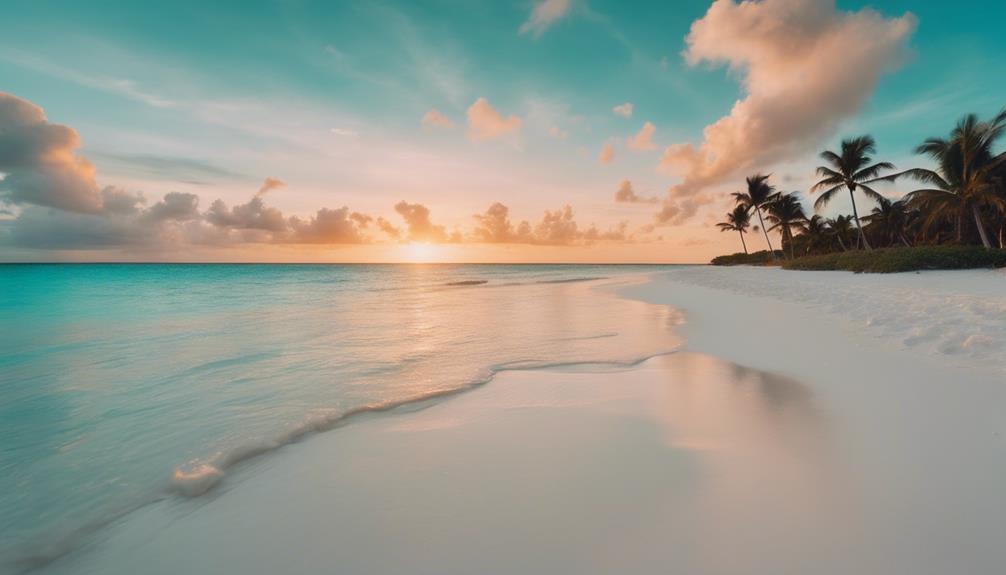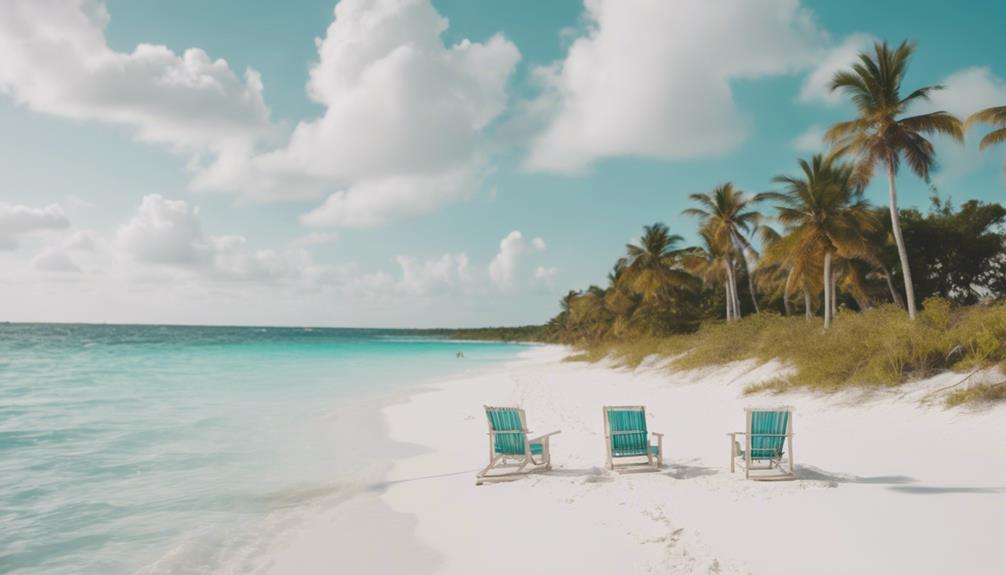Starting your day with a cold-water plunge can boost your immune system, improve circulation, and sharpen mental clarity. Cold exposure triggers your body’s natural stress response, releasing endorphins and activating white blood cells. To stay safe, start gradually, use controlled breathing, and limit initial dips to a couple of minutes. Remember to warm up afterward and consult a healthcare professional if you have health concerns. Continue exploring to discover how to make this practice safe and effective.
Key Takeaways
- Cold-water plunges activate immune, cardiovascular, and metabolic responses, boosting overall health and resilience.
- Regular practice enhances mood, mental clarity, and emotional resilience through endorphin and nervous system stimulation.
- Safety precautions include gradual temperature reduction, controlled breathing, limited initial duration, and safety gear.
- Consistent immersion (3-4 times weekly) can improve circulation, immunity, and stress adaptation over time.
- Always consult healthcare providers if you have existing health conditions before beginning cold-water plunges.
Understanding the Science Behind Cold-Water Immersion
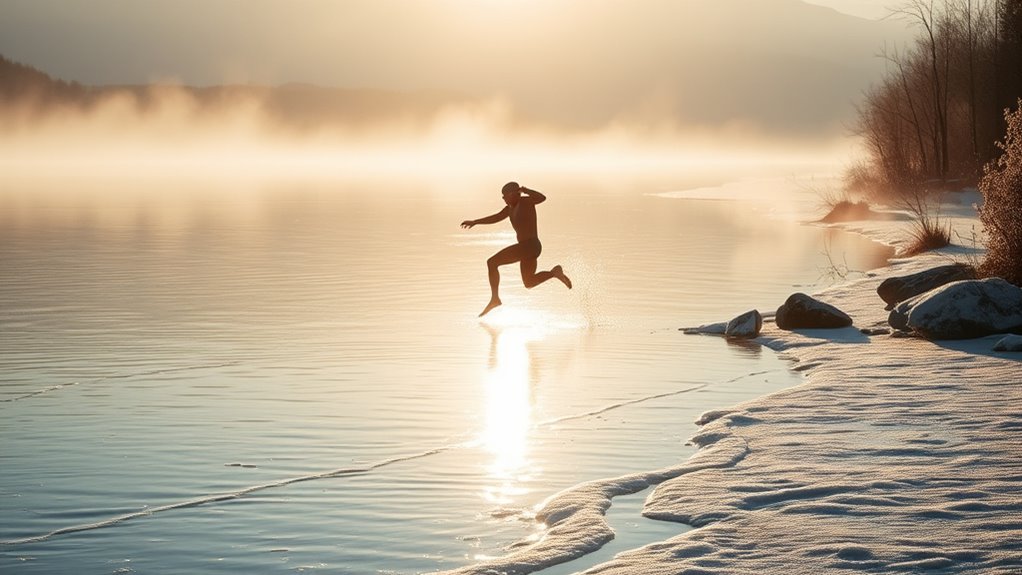
When you immerse yourself in cold water, your body immediately reacts to the drop in temperature by constricting blood vessels and activating your nervous system. This response, called vasoconstriction, helps preserve core body heat by redirecting blood flow away from your extremities. Simultaneously, your sympathetic nervous system kicks in, releasing stress hormones like adrenaline. This boost increases alertness and heart rate. Cold exposure also stimulates the release of endorphins, which can improve your mood and reduce pain. Over time, your body adapts to these stressors, becoming more efficient at managing cold temperatures. This physiological response is a natural survival mechanism that, when practiced safely, can lead to various health benefits and increased resilience to environmental stresses. Regular exposure to cold water can also enhance your immune response, making you more resistant to certain illnesses. Additionally, consistent cold-water immersion may promote metabolic rate improvements, supporting overall health and energy levels. Moreover, this adaptation can help your body better handle other environmental stresses, contributing to overall physical resilience.
Key Benefits of Starting Your Day With Cold Water
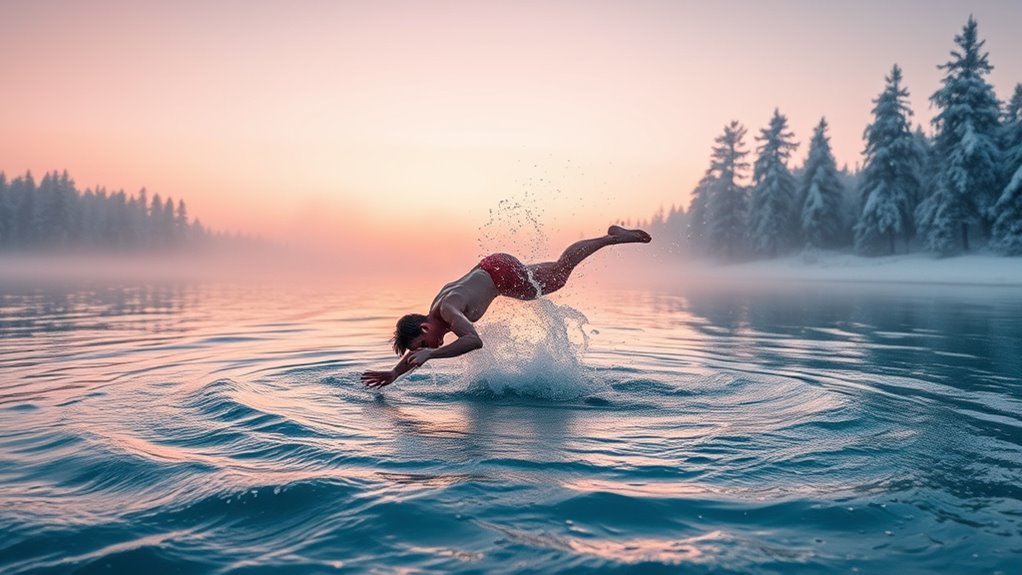
Starting your day with cold water can give your circulation a boost and improve heart health over time. It also sharpens your mental alertness, helping you stay focused throughout the day. Plus, it supports your immune system, making it easier to fend off illnesses. Incorporating air quality awareness into your routine can further enhance your overall health and well-being. Using electric bikes for your commute can reduce pollution and promote cleaner air in your environment. Additionally, employing air purifiers with HEPA filters can effectively remove allergens and pollutants from indoor air, contributing to better respiratory health. Being mindful of skin protection strategies, such as avoiding overexposure and using proper skincare, can help maintain skin health while enjoying outdoor activities. Understanding the importance of greenhouse ventilation can also help maintain optimal growing conditions and improve indoor air quality.
Boosts Circulation and Heart Health
Cold water immersion causes your blood vessels to contract and then rapidly dilate, which enhances circulation throughout your body. This process helps improve blood flow, guaranteeing oxygen and nutrients reach your organs and tissues more efficiently. As your vessels constrict, your heart works harder to pump blood, strengthening cardiovascular function over time. Regular cold plunges can lower blood pressure and reduce the risk of heart-related issues by promoting healthier vessel elasticity. You may notice increased energy and vitality as your circulation improves, supporting overall heart health. Additionally, engaging in cold water therapy can stimulate your spiritual energy, promoting mental clarity and emotional resilience. Incorporating controlled cold exposure can also activate your body’s autonomic nervous system, leading to improved stress regulation and resilience. This practice may also boost your immune system response, helping your body defend against illnesses. Moreover, cold water immersion can enhance your metabolic rate, supporting weight management and overall vitality. Just remember, consistency is key, and always listen to your body. If you have existing heart conditions, consult a healthcare professional before starting cold water immersion to guarantee it’s safe for you.
Enhances Mental Alertness
Immersing yourself in cold water in the morning can considerably boost mental alertness, setting a focused tone for the day. The shock of cold stimulates your nervous system, increasing adrenaline and norepinephrine levels. This surge sharpens your focus, improves concentration, and clears mental fog. Cold exposure also boosts the production of endorphins, which elevate your mood and reduce stress. As your body adapts to the cold, your brain becomes more alert, helping you feel more awake and ready to tackle daily tasks. Additionally, the practice of mindfulness during cold water immersion can enhance the mental benefits by encouraging present-moment awareness. Consistently starting your day with cold water can train your mind to respond quickly to stimuli, enhancing cognitive function. This mental clarity not only benefits work and personal projects but also creates a sense of accomplishment early in the day. Incorporating home decor elements that promote a calming environment can further support mental focus and relaxation throughout the day. Moreover, understanding the brewing guides for coffee can help you establish a routine that complements your morning practices, fostering overall well-being. Engaging in physical activity post-immersion can further boost alertness and energize your morning routine.
Supports Immune Function
The boost in mental alertness from cold water exposure also extends to your immune system. Regular cold plunges can activate your body’s defenses, making you less prone to illnesses. Cold water stimulates the production of white blood cells, which fight off infections. It also reduces inflammation and helps your body recover faster from stress. Incorporating cold water into your morning routine can strengthen your immune response over time. To better understand, here’s a quick overview:
| Benefit | How It Works | Result |
|---|---|---|
| Increases white blood cells | Cold exposure triggers immune response | Better infection resistance |
| Reduces inflammation | Lowers cytokine levels | Faster recovery |
| Boosts circulation | Enhances blood flow | Overall health improvement |
| Improves stress response | Calms the nervous system | Less illness susceptibility |
| Enhances resilience | Builds immune system strength | Long-term immunity benefits |
Additionally, consistent cold water exposure can improve your body’s adaptation to stress, which further bolsters your immune resilience. Regular exposure to cold water can also promote cardiovascular health, supporting overall bodily functions. Engaging in cold water plunges may also positively influence hormonal balance, contributing to a healthier immune system.
Preparing for a Safe Cold-Water Plunge

To stay safe during your cold-water plunge, you should start by gradually lowering the water temperature to let your body adjust. Make sure to wear essential safety gear like a wetsuit, goggles, and a hat to protect yourself from the cold. Taking these steps guarantees your experience is both enjoyable and secure. Additionally, being aware of how indoor air quality can impact your health helps you understand the importance of proper preparation and care for your skin before exposure to extreme conditions. Incorporating automation technologies can also assist in monitoring environmental factors to ensure optimal safety conditions. For added safety, consider using appropriate ear protection to prevent discomfort from sudden pressure changes or water exposure. Emphasizing the significance of father-daughter bonds can motivate you to share your cold-water experiences with loved ones for emotional support.
Gradual Temperature Descent
Before taking the plunge into cold water, it’s essential to gradually lower your body temperature to reduce shock and make certain of safety. Start with warm showers or brief exposure to cooler water, slowly decreasing the temperature over days. This helps your body adapt, building resilience and confidence. Visualize your progress:
| Step | Action | Effect |
|---|---|---|
| Gradual Cooling | Short, cool showers | Eases shock response |
| Incremental Exposure | Cold-water dips for seconds | Builds tolerance |
| Consistent Practice | Regular cold exposure | Strengthens mental and physical resilience |
| Deep Breathing | Focused breathing during dips | Reduces panic and stress |
This careful descent primes your body, making cold-water plunges safer and more enjoyable. Incorporating proper preparation can further enhance your safety and comfort during cold-water immersion.
Essential Safety Gear
Proper safety gear is essential to guarantee your cold-water experience remains secure and comfortable. Wearing a wetsuit or thermal swimwear helps maintain body heat and reduces shock from the cold water. Consider gloves and booties to protect your extremities from frostbite, especially in very cold conditions. A waterproof hat or hood can prevent heat loss from your head. Always carry a brightly colored towel or blanket nearby for quick warmth after your plunge. Using a safety buoy or floatation device adds extra security, especially if you’re alone or in open water. Carry a waterproof waterproof whistle or signaling device to alert others if you need help. Investing in quality gear ensures you stay warm, safe, and able to enjoy your cold-water adventure fully.
Tips for Gradually Building Tolerance
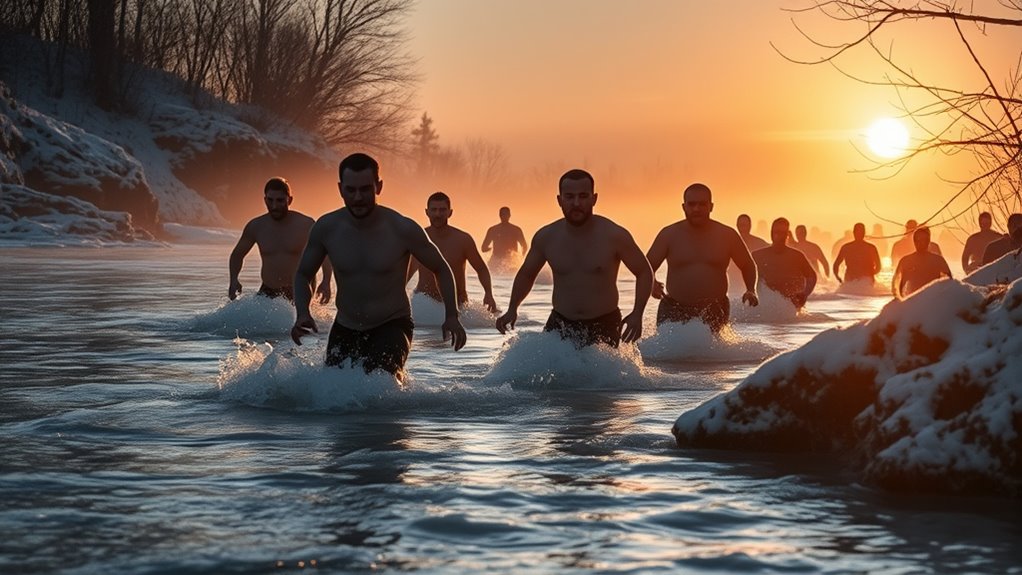
Building tolerance to cold water takes time and patience, so rushing into full plunges can lead to discomfort or even injury. Start by acclimating your body gradually. Begin with short exposure, such as splashing cold water on your face or hands, and increase exposure time over days or weeks. You can also sit in lukewarm water, then slowly lower the temperature as you become more comfortable. Focus on controlled breathing to manage the shock response and stay relaxed. Consistency is key—regular practice helps your body adapt. Pay attention to how you feel during each session, and never push yourself to the point of severe discomfort. Building tolerance is a gradual process that prepares your body safely for longer or colder immersions.
Potential Risks and Who Should Avoid Cold Water Dips
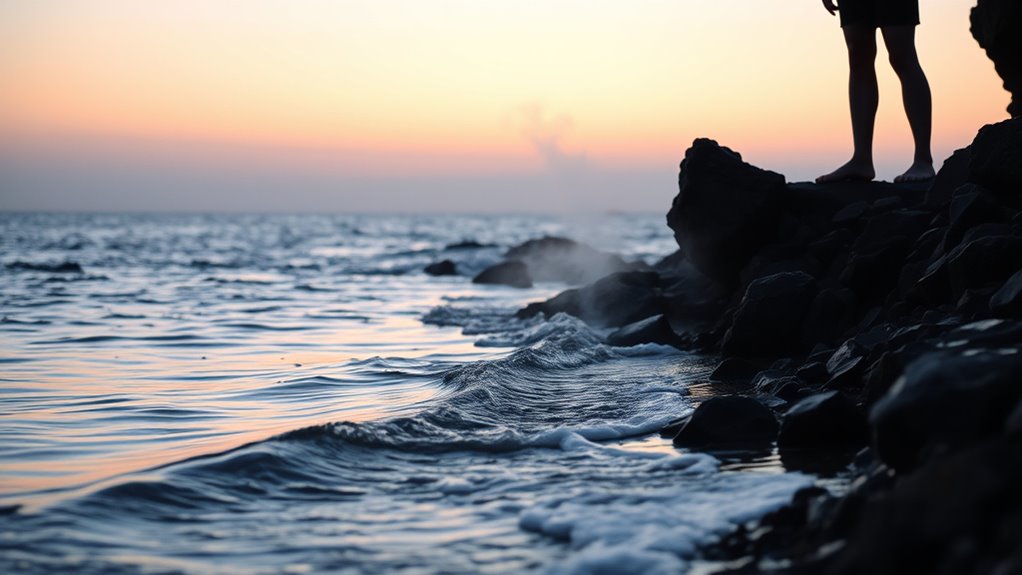
While cold water plunges can offer benefits, they also pose risks that you should consider seriously. If you have heart problems, high blood pressure, or respiratory issues, cold water immersion might trigger dangerous reactions like rapid heart rate or breathing difficulties. Pregnant women, the elderly, and individuals with compromised immune systems should avoid cold plunges, as the shock from sudden cold exposure can be harmful. People with Raynaud’s disease or circulatory problems risk worsening their symptoms. Additionally, if you’re untrained or plunge alone, you increase the chance of accidents or hypothermia. Always listen to your body and consult with a healthcare professional if you have any health concerns before attempting cold water dips. Prioritize safety to enjoy the potential benefits without unnecessary risks.
Best Practices for a Refreshing and Safe Experience
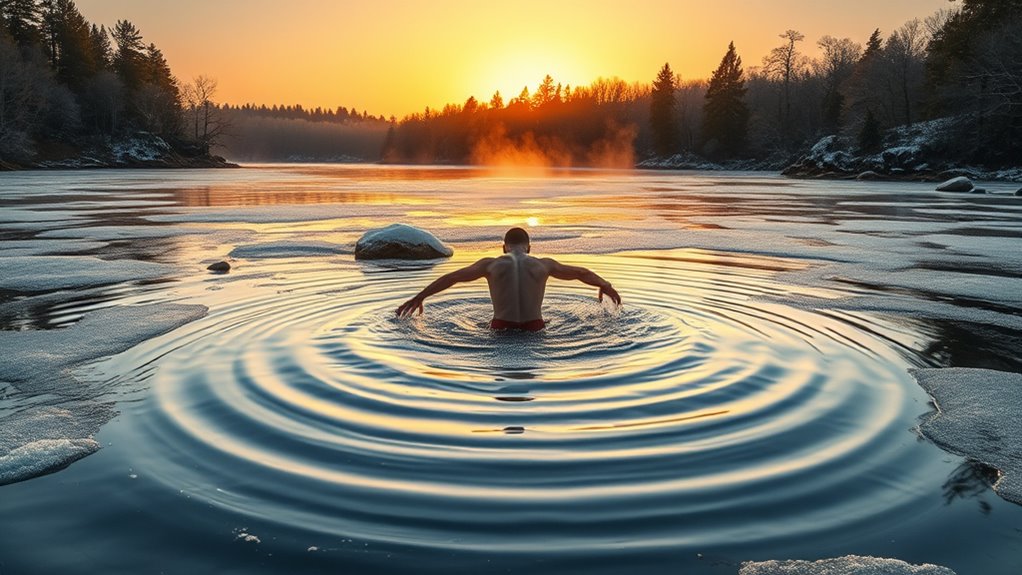
To enjoy the benefits of cold-water plunges safely, it’s important to follow some best practices that promote an invigorating experience without risking your health. First, start with a gradual approach; dip your toes first and slowly lower yourself into the water. Always listen to your body and exit immediately if you feel dizzy, numb, or uncomfortable. Prepare your body with light stretching beforehand and warm up afterward to prevent shock.
- Keep your head above water to avoid hyperventilation
- Limit your initial dips to 1-2 minutes, then gradually increase
- Have a buddy nearby for safety and support
Following these tips helps you enjoy the rejuvenating effects while minimizing risks, ensuring a safe and energizing experience.
Incorporating Cold Water Dips Into Your Wellness Routine
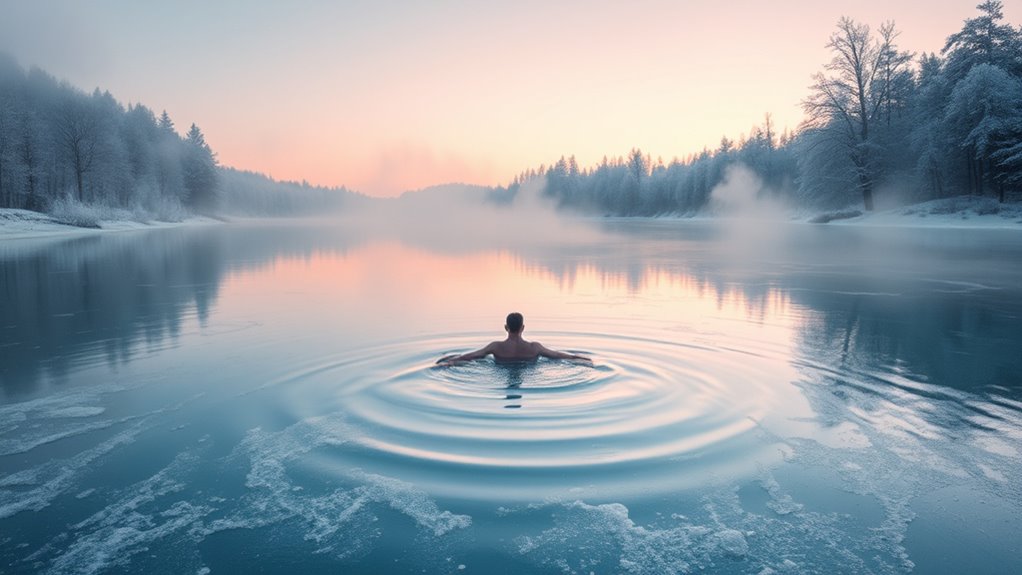
Integrating cold water dips into your wellness routine can boost your overall health and resilience. Start gradually—begin with short immersions and increase duration as your body adapts. Consistency is key; aim for 3-4 times a week to build tolerance and experience benefits like improved circulation, mood, and immune function. Timing matters too: early mornings, especially at sunrise, maximize mental clarity and energy. To stay motivated, track your progress and listen to your body. Here’s a quick guide to help you incorporate dips:
| Step | Tip | Benefit |
|---|---|---|
| Start small | 30 seconds to 1 minute | Prevents shock and discomfort |
| Use proper gear | Wear a hat and gloves if needed | Keeps body warm and safe |
| Focus on breathing | Deep, steady breaths | Reduces panic and enhances relaxation |
| Gradually increase duration | Add 10-15 seconds weekly | Builds resilience and endurance |
Frequently Asked Questions
How Long Should I Stay in the Cold Water Each Session?
You should start with short durations, around 30 seconds to 1 minute, especially if you’re new to cold plunges. As your body adapts, you can gradually increase your time up to 3-5 minutes. Listen to your body and avoid staying in too long to prevent hypothermia or shock. Always prioritize safety, and consult a healthcare professional if you have any health concerns before extending your sessions.
Can Cold-Water Plunges Improve Mental Clarity or Focus?
Cold-water plunges can boost your mental clarity and focus by activating your nervous system and releasing endorphins. When you immerse yourself, you stimulate alertness and reduce mental fog, helping you feel more present and sharp. Regular exposure may also improve your stress response over time. So, if you want to sharpen your mind, incorporating cold plunges into your routine might be a beneficial, natural way to enhance your mental clarity.
What Are Signs That I Should Stop Immediately During a Plunge?
During a cold-water plunge, you should stop immediately if you experience intense shivering, chest pain, dizziness, or numbness that doesn’t improve. If you feel disoriented, struggle to breathe, or notice any signs of hypothermia, it’s vital to exit the water right away. Listening to your body is critical, so trust those signals and avoid pushing through dangerous discomfort. Safety always comes first in cold-water immersion.
How Often Should Beginners Practice Cold-Water Immersion Weekly?
Imagine dipping your toes into a chilly stream, testing its icy grip. As a beginner, start slow with 1 to 2 sessions weekly, giving your body time to adapt. Listen to your body’s signals—if you feel dizzy, numb, or uncomfortable, pause immediately. Gradually increase frequency as you build resilience, but always prioritize safety. Consistency helps your body embrace the cold, transforming discomfort into strength over time.
Are There Specific Times of Day That Are Better for Cold Plunges?
You might wonder if certain times of day are better for cold plunges. Generally, morning or early afternoon can be ideal because your body is more alert and less fatigued. Cold water immersion can boost your mood and energy levels, so doing it when you’re most active helps maximize benefits. However, listen to your body’s signals and choose a time that fits your schedule and comfort level for safety and consistency.
Conclusion
Embracing cold-water plunges can boost your mood and your immune system, with studies showing over 70% of regular practitioners notice improved well-being. But remember, safety matters—start slow, listen to your body, and consult a professional if needed. By incorporating these dips thoughtfully, you can enjoy the invigorating benefits while minimizing risks. Take the plunge, and discover a revitalizing way to kick-start your mornings every day.



